Agentic AI: CVG, Lufthansa, ADR, FRA and DataArt discuss the transformative potential of advanced autonomy and the move towards Artificial General Intelligence
The following article was published by Future Travel Experience
CVG, Lufthansa Industry Solutions, ADR, Fraport, and DataArt discuss the transformative potential of agentic AI to act autonomously in dynamic environments and the ultimate move towards Artificial General Intelligence.
Agentic AI refers to the point at which artificial intelligence (AI) moves beyond merely responding to input and begins to take ownership of outcomes. These solutions are rapidly spreading across various industries, including air transport. Progressive airlines and airports are increasingly exploring the potential of agentic AI – systems capable of autonomously executing tasks and interacting with travellers and staff. In part 1 of our comprehensive focus on agentic AI, CVG Airport, Lufthansa Industry Solutions, Aeroporti di Roma, Fraport, and DataArt discuss its transformative potential to act autonomously in dynamic environments and the ultimate move towards Artificial General Intelligence. Agentic AI will be further explored at FTE Global – the “CES of Aviation” taking place in Long Beach, California, on 9 to 11 September 2025.
CVG Airport: How agentic AI is transforming operational efficiency, CX and asset utilisation
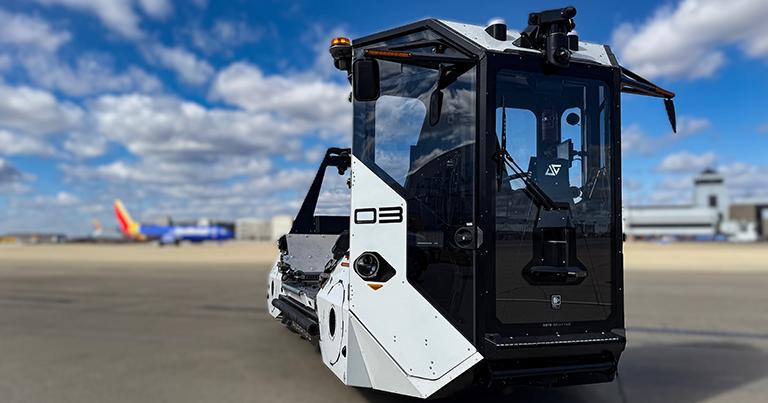
Cincinnati / Northern Kentucky International Airport (CVG) – a Corporate Partner of the FTE Digital, Innovation & Startup Hub – is exploring and deploying impactful use cases for agentic AI. Brian Cobb, Chief Innovation Officer, CVG Airport, explains that agentic AI consistently pays off in three arenas:
- Operational efficiency: “Dynamic stand, gate and vehicle routing that mitigates or minimises delay minutes.”
- Customer experience: “Autonomous queue management and wayfinding agents that minimise wait times and push curated offerings when a flight is delayed, driving higher per-enplanement spend.”
- Profitability/asset utilisation: “Energy-optimisation agents that shut down HVAC zones and charger banks when occupancy forecasts dip, cutting our campus power bill by mid-single digits.”
“Travel industry studies show these ‘sense-decide-act’ agents raise speed of decision-making exponentially over dashboard-only analytics,” Cobb shares.
Indeed, CVG is already moving past dashboards toward ‘do-it’ agents. Cobb highlights three pilot developments that demonstrate the shift:
- “CLEAR (Critical Limits Evaluation & Adaptive Routing) is a co-developed product that will fuse sensor feeds to identify ground vehicles competing for roadway space and in turn prioritise, redirect, and mitigate personal vehicles, logistics trucks, and other airport traffic before a chokepoint occurs. The intentional design is to ensure a steady-state flow of prioritised logistics vehicles in and out of our port-like environment for our two major air cargo companies and their supportive supply lines.”
- “On the ramp, Aurrigo Auto-DollyTug® vehicles are being developed with onboard vision and scheduling agents to decide the most efficient bulk baggage and ULD moves. The intentional design is to offset labour gaps and relocate labour where their highest and best use is more aptly placed.”
- “Inside the terminal, we have rolled out Veovo’s curb-to-gate flow agents, with scalable prediction models throughout the customer journey. The intentional design allows us to maximise queue space needs, minimise inefficient use of assets, while under-promising and over-delivering on anticipated wait times by the travelling customer. The value-add is scalability to our concession partners for pre-planning and timely sales cycles prior to the flight departures.”
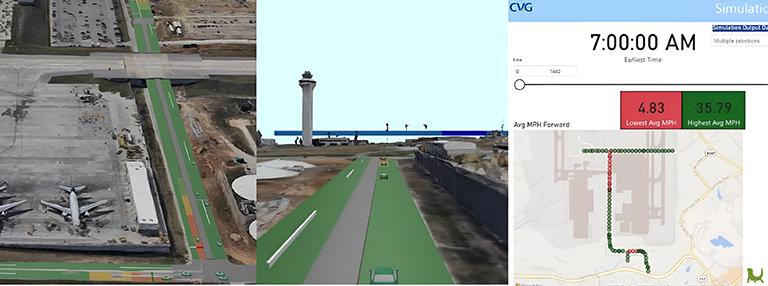
While generative AI creates – text, images or code – once a human has framed the prompt, agentic AI acts: it sets a goal, plans, reasons over live data, and executes in the physical or digital world with feedback loops. “We embarked on this journey to understanding the fundamentals of fuzzy logic in 2019, pre-current AI craze, with colleagues at the University of Cincinnati,” Cobb explains. “At an airport this means moving from a chatbot that answers ‘When is gate B14 boarding?’ (generative) to an agent that detects a weather-driven delay, re-gates the flight to balance connections, notifies crews, and updates passenger messaging – all autonomously. That closed-loop action collapses reaction time from tens of minutes to seconds, increases gate-utilisation efficiency, and frees staff to focus on high-touch service and critical safety and security expectations.”
CVG’s drive to this end-state is aligning prior learnings and capabilities through partner relationships such as Hello Lamp Post (HLP). “HLP is building the baseline of what our consumers want to know most often, what requests happen around emergent events (e.g. IROPs), and what’s the optimised output that provides the customer with the clarity and reassurance they need while autonomously advising, aligning, and adjusting adjacent systems behind the scenes,” says Cobb.

Agentic AI rollouts hit three predictable hurdles: data fragmentation, validity, and safety-critical rigour; regulatory and explain-ability requirements; and workforce adoption curves. CVG is adapting to these through sandboxing prior to production and deployment; an evolving governance understanding that will need to vet each agent for bias, failure modes, and regulatory compliance; and ‘human-on-the-loop’ cultural change expectations while supporting healthy scepticism into beneficial process improvements. “This phased, proof-of-concept model lets us fail fast, then advance when and where appropriate,” Cobb explains.
The power of collaborative innovation is essential in the successful adoption of agentic AI. “With rare exception, it’s a tremendous lift to expect a single airport to field the talent, technology, and implied capital to build enterprise-grade agents alone,” says Cobb. “Our biggest wins – Auto-DollyTug with Aurrigo, CLEAR with Tuatara Consulting, and terminal analytics with Veovo – all came from co-development sprints where we shared real-world data and business KPIs while partners continued to iterate on our needs-based use cases.”
These partnerships accelerate alignment and de-risk investment based on which strengths each organisation brings to the table. “Our lesson to share: treat the airport as a living lab and leverage beneficial IP-sharing and joint-commercialisation opportunities into pilot engagements,” Cobb adds.
Looking ahead, as agent frameworks mature into Artificial General Intelligence (AGI), CVG expects three long-term shifts:
- “First, moving towards self-optimising campuses. An AGI-driven ‘central system’ will continuously trade-off airside, landside, energy, and retail objectives against live demand, delivering near-frictionless customer flows and accelerated cost-saving opportunities.”
- “Second, personalised curated journeys: the same system will leverage trust-based consumer-optioned end-to-end itineraries, to include accessibility services, real-time alternative recommendations, and potential for dynamic pricing.”
- “Third, new workforce models: AGI presents the opportunity to upskill and adapt to the future of jobs rather than the spectre of job displacement. We’re being presented with an ideal time and place to partner with educational institutions to see, support, and supply the future jobs pipeline into aviation.”
Hear more from Cincinnati / Northern Kentucky International Airport (CVG) at FTE Global – the “CES of Aviation” taking place in Long Beach, California, on 9 to 11 September 2025. Hannah Meredith, Senior Manager – Strategic Innovation, CVG Airport, is participating in ‘The FTE AI Symposium – Part 1: Case Studies on how organisations are putting AI to work across their businesses’. Meredith will deliver a joint presentation alongside Steve Cundy, Founder & CEO, Tuatara Consulting, and Tom Driscoll, Director – Service Delivery, Tuatara Consulting, titled ‘Listen in on how CVG is going CLEAR with scalable, AI-enabled software for critical limits evaluation and alternative routing to maximise strategic growth and minimise bottlenecks’. Meanwhile, Brian Cobb, Chief Innovation Officer, CVG Airport, is participating in ‘The FTE Robotics & Autonomous Vehicles Symposium’. Cobb will deliver a joint presentation with Miles Garner, Director of Sales and Marketing, Aurrigo, titled ‘Insights and recommended practices from CVG on planning and scaling autonomous vehicle use at airports (Mapping, Testing, Modelling, Simulation, Testing, Deployment, Scaling. Rinse and repeat)’.
View the full FTE Global 2025 schedule at a glance >> Register for FTE Global 2025 >>Lufthansa Industry Solutions’ focus on “practical steps like agentic AI that deliver real impact today”
Lufthansa Industry Solutions helps airlines and airports use artificial intelligence (AI) not just to analyse data but to make decisions on the spot. For example, reassigning gates during disruptions or suggesting the fastest turnaround steps in real-time. “Our focus is on practical solutions that keep operations moving smoothly,” says Stanislaw Schmal, Director Digital & AI, Lufthansa Industry Solutions US.

Schmal is participating in the FTE AI Symposium at FTE Global – the “CES of Aviation” taking place in Long Beach, California, on 9 to 11 September 2025, where he will share key insights into some of the most promising use cases for agentic AI in the airline and airport industries, and how it could impact operations, customer service, and more.
“Agentic AI can manage disruptions, predict bottlenecks, or help passengers navigate the airport more easily,” Schmal explains. “It means fewer delays, happier travellers, and more efficient use of resources. This all impacts revenue and customer happiness.”
While generative AI creates content, agentic AI actually takes action. “Instead of just recommending a solution, it can execute it – like automatically rebooking passengers or rerouting bags. This will help airlines and airports to move from reactive to proactive operations.”
Of course, while offering significant opportunities there are also challenges regarding the utilisation of agentic AI. “Data quality and integration are big hurdles,” says Schmal. “Building trust in automated decisions is a challenge as well. Starting small, using AI to handle one process like baggage routing, will help build confidence and show quick wins before scaling up.”
Collaboration between tech providers and industry stakeholders such as airlines and airports is absolutely critical to the successful implementation of agentic AI. “Airlines and airports know their operations best, and tech partners bring in the AI expertise,” Schmal comments. “Working closely together ensures the solutions really fit day-to-day needs rather than just looking good on paper.”
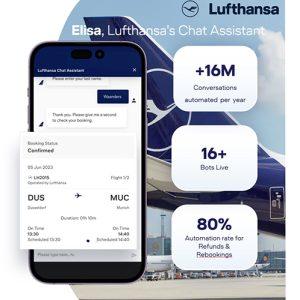
Agentic AI is not just about automation – it’s about transforming the way we work. There are, inevitably, concerns about how agentic AI will reshape the workforce and whether it will displace certain jobs, or instead create new opportunities. “I believe agentic AI will actually empower operations teams rather than replace them,” Schmal shares. “By taking over repetitive or stressful tasks, like manually coordinating gate changes or tracking turnaround delays, ops staff can focus on higher-level problem-solving and helping passengers directly. It frees them up to use their expertise where it really matters.”
Meanwhile, the ultimate move towards Artificial General Intelligence (AGI) would be a huge leap. “It could handle complex, cross-functional decisions on its own,” Schmal notes. “But for now, we’re focused on practical steps like agentic AI that deliver real impact today. AGI is exciting, but still a longer-term vision.”
Looking ahead, Schmal is eager to participate at FTE Global – the “CES of Aviation” taking place in Long Beach, California, on 9 to 11 September 2025. “I’m looking forward to reconnecting with familiar faces and meeting new colleagues who are passionate about aviation and AI. As a flagship conference, FTE Global offers a unique platform where aviation professionals can come together to really shape the future of AI in the industry. From past experiences, it’s been a great place for meaningful conversations and practical insights that help move the industry forward.”
View the full FTE Global 2025 schedule at a glance >> Register for FTE Global 2025 >>Aeroporti di Roma’s agentic AI adoption roadmap to enhance operations and CX
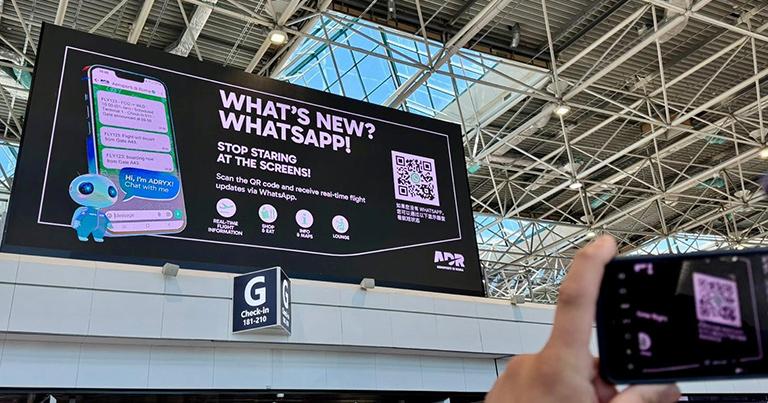
Aeroporti di Roma – a Corporate Partner of the FTE Digital, Innovation & Startup Hub – has started its agentic AI adoption roadmap with the development and deployment of a custom virtual assistant for passengers. The virtual assistant, which can be used as a chat-assistant and will be soon available as a voice-assistant too, is generating benefit both in terms of operations enhancement and of improved customer experience.
“From an operational point of view, the virtual assistant allows us to reduce the load on human staff by guaranteeing 24/7 support across all the areas of the airport,” explains Floriana Chiarello, Head Enterprise Transformation, AI & Governance, Aeroporti di Roma. “From the customer experience perspective, the virtual assistant introduces real-time travel assistance with live updates about flights and procedures and helps reducing passengers’ confusion and anxiety, especially during disruptions. In addition, the AI agent can generate a personalised journey support with reminders about boarding times, nearby restaurants or duty free offers and lounge availability. These AI-driven recommendations are as well designed to respond to specific and personalised people’s exigencies such as nutritional needs (e.g. people who suffers from celiac disease) and family needs (e.g. families travelling with children or elderly members).”

Agentic AI offers transformative potential across the airport industry. “Some examples of impactful use cases in the fields of operational efficiency, customer experience, and profitability are Autonomous Airport Operations Management, where AI agents monitor real-time data (e.g. weather, flight delays, staff availability) to dynamically adjust gate assignments, runway usage and ground crew deployments; implementation of Multilingual Conversational Agents, namely AI virtual assistants that help with common queries, disruptions, and real-time updates in multiple languages and Targeted Retail & Duty Free Engagement, that allows to generate personalised offers based on travel history, location, and preferences,” says Chiarello.
The shift from generative AI to agentic AI represents a significant evolution in capabilities and autonomy, with deep implications for industries like aviation, particularly in airport operations, customer service, and innovation.
“Generative AI focuses on producing outputs like text, images, or code in response to user prompts, operating passively and typically engaging in short-term interactions without long-term memory or planning,” Chiarello shares. “In contrast, agentic AI is designed to actively pursue goals, making autonomous decisions, executing tasks, and adapting to changing environments over time. While generative AI is centred on content creation, agentic AI emphasises achieving outcomes through sustained, multi-step reasoning, long-term memory, and strategic planning.”
For example, in the field of airport operations, generative AI only enables passive tasks like automated report summaries or flight delay explanations. Agentic AI allows airports to completely re-design the paradigm of airport operations by enhancing airport efficiency through the active management of complex tasks, the forecasting of future scenarios and real-time decision-making procedures.
“In the field of customer service, agentic AI allows is to revolutionise the passengers’ experience through the implementation and adoption of virtual assistants,” Chiarello adds. “Unlike static chatbots, virtual assistants are in fact capable of learning passengers’ preferences and adapting their behaviour according to their personal needs.”
Implementing agentic AI introduces several technical, ethical, and operational challenges. A first key challenge to be addressed is the balance between autonomy and human control of AI agents. “Highly autonomous agents can make critical decisions without sufficient oversight, increasing the risk of unintended consequences,” Chiarello explains. “This requires ‘human-in-the-loop’ oversight, including confidence thresholds for decision escalation, manual approval gates, and safe interrupt mechanisms to maintain controllability. Secondly, the lack of interpretability can as well represent a cause for concern: as agents make increasingly complex decisions, it becomes difficult to understand or audit their behaviour. Finally, ethical, legal, and societal risks have to be addressed too: agents may make decisions that are ethically questionable, legally non-compliant, or socially disruptive. In this respect, alignment techniques like constitutional AI instil ethical boundaries and perform proactive impact assessments to guide deployment responsibly.”
Collaboration between airports and technology providers is critical to the successful adoption of agentic AI because of several interdependent factors. “First of all, airports require domain-specific expertise: while tech providers bring cutting-edge AI capabilities, they often lack the deep, nuanced knowledge of airport workflows, security mandates, and stakeholder coordination,” says Chiarello. “In addition, airports often run on complex, aging infrastructure. Successfully deploying agentic AI requires integration with legacy systems (e.g. baggage handling, security, or air traffic control platforms). Tech providers need access and technical cooperation to adapt AI to these systems in a non-disruptive way. On top of this, AI systems need real-time access to large volumes of operational data (e.g. passenger flow, weather, gate availability). This data often resides in siloed, proprietary systems and raises privacy and cybersecurity concerns. Effective partnerships enable secure, responsible data sharing and data governance protocols that are legally compliant and operationally feasible.”
Looking ahead, Chiarello explains that the ultimate progression towards Artificial General Intelligence (AGI) will have a long-term impact on aviation that is likely to redefine efficiency, safety, sustainability, and user experience. “It promises to shift the paradigm from human-led to AI-optimised aviation, with enormous benefits but significant challenges. The journey to full AGI integration will be gradual, but the direction is clear: a completely redesigned way of running airport processes and operations, that will as well require reimagined roles and behaviours for humans.”
FRA deploying agentic AI as core part of Fraport.2030 corporate strategy and AI@Fraport initiative
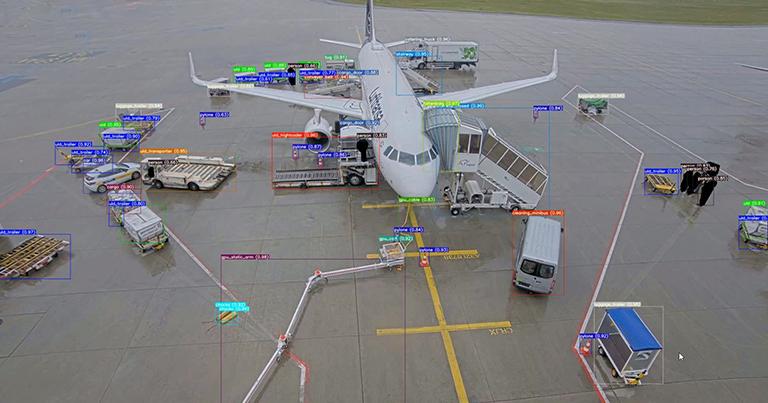
Fraport – a Corporate Partner of the FTE Digital, Innovation & Startup Hub – is actively developing and deploying agentic AI technologies as a core part of its Fraport.2030 corporate strategy and the AI@Fraport initiative. A prime example is the Intelligent Dispatching Agent (IDA) – a sophisticated artificial intelligence (AI) system designed to optimise the complex coordination of aircraft turnaround at Frankfurt Airport – one of Europe’s largest and busiest hubs. “Developed in cooperation with our solution provider InstaDeep, IDA utilises deep reinforcement learning to dynamically assign ground handling tasks based on real-time data,” shares Claus Grunow, Vice President of Corporate Strategy and Digitalization, Fraport. “This enables the system to make automated, optimal decisions in a highly complex and variable environment, supporting dispatchers by easing their workload and allowing them to focus more on communication and oversight.”
IDA is trained in a highly realistic simulation environment, where it learns to allocate resources efficiently under a wide range of scenarios. “This agentic AI approach is particularly well-suited to challenges characterised by multiple layers of complexity and uncertainty, such as coordinating more than 1,000 aircraft turnarounds daily, managing over 12,000 employees, and operating a baggage handling system spanning almost 80 kilometres,” says Grunow.
Agentic AI holds significant transformative potential for the airport industry, particularly in domains where complexity, uncertainty, and the need for real-time decision-making are high. “One of the most impactful use cases is the optimisation of aircraft turnaround processes, as seen with Fraport’s Intelligent Dispatching Agent (IDA),” Grunow explains. “By autonomously assigning ground handling tasks and adapting to ever-changing conditions, agentic AI minimises delays, maximises resource utilisation, and ensures that staff can focus on more value-adding activities. This directly translates to operational efficiency and cost savings.”

Agentic AI and generative AI serve distinct but complementary roles within the realm of AI. GenAI, such as large language models (LLMs), primarily focuses on producing content, based on patterns learned from extensive datasets. The result: text, images, or other media. These systems are powerful for automating communication, generating reports, or offering information, but their decision-making is usually reactive and based on static data.
In contrast, agentic AI systems are designed to act autonomously in dynamic environments, pursue defined goals, and make decisions in real time. “They are often trained via reinforcement learning, where the AI agent learns through trial and error in simulated environments, receiving feedback to improve its performance,” says Grunow. “The shift towards agentic AI enables airports to move from static automation to adaptive, proactive management of complex operations. By leveraging agentic AI, airports can respond to real-time events, optimise processes on the fly, and reduce the risk of human error in high-pressure situations. This not only streamlines operations and boosts efficiency but also allows staff to focus on higher-level tasks, ultimately improving customer service and driving innovation in service delivery.”

Implementing agentic AI in a complex environment like an airport presents several key challenges. First and foremost is the integration of AI into existing workflows without disrupting operations or alienating staff. Fraport addresses this by closely involving dispatchers and other frontline employees throughout the development and deployment of agentic AI systems like the Intelligent Dispatching Agent (IDA). “A dedicated group of dispatchers actively participates in testing and refining the AI, ensuring that the technology supports rather than replaces human expertise,” Grunow explains. “Another significant challenge is the need for robust data infrastructure. Agentic AI relies on real-time, high-quality data from a multitude of sources.”
Ensuring transparency, accountability, and ethical use of AI is also paramount. The AI@Fraport initiative includes the formulation of ethical guidelines and systematic evaluation of AI solutions to safeguard against unintended consequences and ensure compliance with data protection regulations.
Grunow adds that the business case for agentic AI must be compelling, particularly given the significant investment required. “Fraport’s approach focuses on areas where the complexity and scale of operations justify the deployment of advanced AI, such as at Frankfurt Airport, where the logistical demands are highest. By prioritising collaboration with staff, investing in data infrastructure, emphasising ethical considerations, and targeting high impact use cases, Fraport is setting best practices for overcoming the challenges of agentic AI implementation.”
Collaboration between airports and technology providers is critical for the successful adoption of agentic AI. Airports operate in highly complex, regulated, and dynamic environments, which require tailored AI solutions that are both technically sophisticated and operationally practical. “Fraport’s partnership with technical providers for the development of the Intelligent Dispatching Agent (IDA) is a clear example of this collaborative approach,” Grunow shares. “Such partnerships enable airports to leverage cutting-edge expertise in AI, while technology providers benefit from real-world operational insights and feedback. This synergy is vital for developing AI agents that are robust, scalable, and capable of handling the unique challenges of airport operations, such as the coordination of thousands of daily aircraft movements and the management of vast numbers of employees and assets.”
Looking ahead, while true Artificial General Intelligence (AGI) remains a longer-term prospect, its eventual realisation could profoundly reshape the aviation industry. AGI would possess the ability to understand, learn, and adapt across a broad range of tasks at a human-like level or beyond, enabling it to tackle challenges that current AI systems cannot fully address.
“In terms of operational advancements, AGI could enable airports to achieve unparalleled levels of efficiency and adaptability,” says Grunow. “Complex processes such as airside operations, security, baggage handling, and passenger flow management could be orchestrated seamlessly and dynamically, with the system continuously learning and optimising in real time. AGI could predict and mitigate disruptions, coordinate resources across the entire airport ecosystem, and make strategic decisions that balance operational needs, safety, sustainability, and profitability. For customer experience, AGI could deliver truly personalised and anticipatory services. Passengers might benefit from fully integrated digital assistants that manage every aspect of their journey, respond to their preferences in real time, and resolve issues proactively. Customer service could become more intuitive, responsive, and empathetic, further enhancing satisfaction and loyalty.”
However, realising these benefits will require careful attention to ethical, regulatory, and workforce considerations. Ensuring transparency, accountability, and human oversight will remain essential as AI capabilities expand.
Hear more from Fraport at FTE Global – the “CES of Aviation” taking place in Long Beach, California, on 9 to 11 September 2025. Jens Sanner, Program Director for Digital Services and Transformation, Fraport, is speaking in a session focused on ‘Advancing Digital Identity & Seamless Travel Efforts’.
View the full FTE Global 2025 schedule at a glance >> Register for FTE Global 2025 >>DataArt on the transformational shift towards goal-oriented and proactive agentic AI

Agentic AI is what happens when artificial intelligence (AI) stops waiting for input and starts owning outcomes. “It’s not a new interface – it’s a new way of working, where systems don’t just respond, they decide, act, and follow through autonomously,” explains Tim McMullen, Vice President, Business Development – Aviation and Travel Technology, DataArt.
While a lot of the conversation is still theoretical, DataArt – a Corporate Partner of the FTE Digital, Innovation & Startup Hub – has already deployed several agentic systems in production across industries. One example comes from a European airport. “Their operations team was flooded with passenger messages, thousands per day through the website, and internal duty managers couldn’t keep up,” says McMullen. “Response delays were common, handovers were manual, and adding staff wasn’t an option. We built an agentic system that ingests incoming messages, classifies them, drafts appropriate responses, escalates edge cases, and ensures follow-up, without relying on human input. Since implementation, the system has reduced operational overhead, accelerated infrastructure setup by 90%, and improved consistency in passenger communication.”
Another example is a multi-agent product advisor developed for retail companies. The objective was to move beyond static recommendations and build a consultative flow. The system includes agents that:
- Understand the user (via CRM and behavioural data)
- Match preferences to product data in real-time
- Explain features, usage, and compatibility
- Check for constraints like allergens or stock issues
“These agents work in sequence, orchestrated by a centralised controller,” McMullen shares. “Once a user expresses intent, the system carries the process from end-to-end. The key in both cases isn’t just the use of large language models (LLMs), it’s the orchestration logic, real-time context awareness, and system-level autonomy. And that’s exactly where we believe the next phase of enterprise AI is headed.”
Agentic AI offers transformative potential. Unlike static automation, agentic AI involves intelligent agents that can analyse data, make decisions and act autonomously, bringing speed, adaptability, and precision to day-to-day operations. McMullen highlights some of the most promising use cases:
- Offer Creation with Pricing & Revenue Management: “AI agents can autonomously monitor booking trends, competitor pricing, and external factors like major events – adjusting offers and fares in real-time without human intervention. This allows for smarter, more agile pricing strategies and optimised revenue.”
- Improved Operational Efficiency: “AI supports crew scheduling and predictive aircraft maintenance planning, reducing downtime, optimising resource usage, and helping lower fuel costs.”
- Passenger Flow & Airport Optimisation: “By analysing real-time data on crowd density and flight delays, agentic AI can dynamically adjust staffing, signage, and routing to ease congestion and reduce wait times.”
- Enhanced Ground Operations During IRROPs: “In the event of irregular operations, AI agents reassign gates, adjust baggage handling, and reallocate crew in real-time – minimising delays and improving turnaround performance.”
To support these innovations, DataArt created the AI Lake Accelerator (AILA) – a modular, cloud-native framework that unifies siloed airline and airport data into a scalable, AI-ready environment.
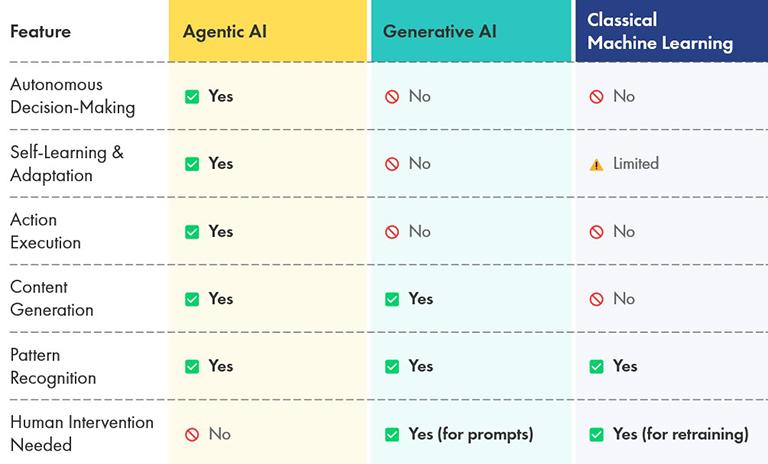
While generative AI is designed to produce outputs in response to user prompts, agentic AI builds on this by embedding those generative capabilities within autonomous systems that can pursue goals, make decisions, use tools, and perform multi-step tasks without continuous human input. “In other words, generative AI is task-specific and reactive, while agentic AI is goal-oriented and proactive,” says McMullen. “This shift is especially transformational for industries like airlines and airports, where operations depend on high volumes of repetitive, time-sensitive tasks across complex systems. For example, in the case of a flight disruption, a generative model can draft a message to affected passengers. An agentic system, on the other hand, can identify the delay, retrieve impacted passenger data, prepare individualised messages, trigger rebooking workflows, and notify internal teams autonomously. Agentic AI systems are designed to interact with APIs, leverage organisational memory, adapt to changing context, and escalate only when necessary. Importantly, these systems can integrate with existing infrastructure, making them a realistic path toward intelligent automation without requiring full system replacement.”

Agentic AI doesn’t succeed in a vacuum. Unlike traditional software deployments, these systems don’t operate on fixed inputs and outputs, they interact with real-time data, dynamic workflows, and human teams. That means implementation isn’t simply about writing code, it’s about understanding how decisions are made, where delays happen, what escalation paths look like, and which outcomes actually matter on the ground. “This kind of understanding can only come from close, ongoing collaboration between the tech provider and the business teams,” McMullen shares. “In our experience, the most successful agentic AI deployments happen when the airline or airport team is deeply involved from day one, not just in defining the use case, but in co-designing the logic, validating the edge cases, and shaping how the system behaves in real operational contexts. The goal isn’t just to automate a workflow, but to make sure the automation works under pressure, in the real world, with real people, in real-time, with meaningful outcomes.”
There are, inevitably, concerns about how agentic AI will reshape the workforce and whether it will displace certain jobs, or instead create new opportunities. McMullen comments that, in the airline and airport sectors, the shift is more about reallocation than replacement. “Instead of displacing people, the more realistic outcome is elevation, enabling staff to focus on higher-value, human-critical tasks: handling exceptions, managing edge cases, delivering service where judgment and empathy matter. And with that comes new opportunities. Roles will emerge around AI supervision, orchestration design, exception management, and data validation. Much like control tower operators don’t fly planes but manage airspace, we’ll see operations staff managing intelligent agents across communication and coordination channels. The key is to treat AI not as a cost-cutting tool, but as a force multiplier for frontline performance.”
Looking ahead, Artificial General Intelligence (AGI) represents a major leap, but McMullen emphasises that its true transformational impact will depend less on when it arrives, and more on how we prepare for it. “The shift to agentic systems is already forcing companies to rethink workflows, decision rights, trust layers, and human-machine interaction. AGI will amplify all of that,” he explains. “But it’s important to be clear: AGI is not just a more powerful version of what we have today. It’s a fundamentally different paradigm of systems capable of reasoning, learning across domains and companies, and adapting to open-ended problems with minimal instruction. That level of autonomy would be transformational for industries like aviation, where complexity is constant, edge cases are the norm, and coordination spans hundreds of moving parts. That said, we’re not there yet. What matters now is building the infrastructure technically, ethically, and operationally to support increasingly intelligent systems. If we get that right, the transition to AGI, whenever it happens, won’t be a disruption. It’ll be an upgrade.”
DataArt is exhibiting at FTE Global – the “CES of Aviation” taking place in Long Beach, California, on 9 to 11 September 2025. Co-located once again with APEX/IFSA Global EXPO, it will be the largest and most influential gathering of air transport executives in North America in 2025, seamlessly blending insights from the airport and inflight worlds under one roof.
View the full FTE Global 2025 schedule at a glance >> Register for FTE Global 2025 >>You may also be interested in
12 technology and CX trends that can enhance airline and airport operations in 2025
APEX FTE EMEA and Ancillary & Retailing 2025 in pictures – ‘Innovate to Elevate’
Article originally published here:
Agentic AI: CVG, Lufthansa, ADR, FRA and DataArt discuss the transformative potential of advanced autonomy and the move towards Artificial General Intelligence
from Future Travel Experience https://ift.tt/gSoKVJm
Comments
Post a Comment